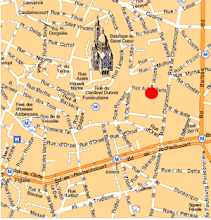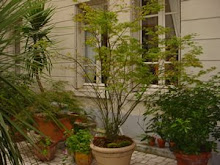Tuesday, October 7, 2008
By Helen Popper
Beekeepers had it easy when cattle roamed freely across the flower-filled meadows of Argentina's Pampas plains. But a boom in soy farming has changed all that.
The legendry prairies have fast become one of the most efficient swathes of cropland on Earth, leaving little room for wild flowers and leading beekeepers in the world's No. 1 honey exporter to move their hives and even sow their own flowers.
"They say that wherever the cow goes, the bee follows ... They live in harmony and both benefit from flowers. But things have changed," said Patricio Crespo, a vet and beekeeper from the town of Chivilcoy, a typical Pampas town that lies some 100 miles from the capital, Buenos Aires.
"It's a shame and it's sad, not just for beekeepers," he added.
Fields of soybeans, corn and wheat have spread across the fertile plains in recent years due to soaring global demand for food and biofuels.
Some ranchers and dairy farmers have moved their herds to distant provinces where soybeans do not flourish, and more and more animals are being reared in feedlots, freeing up valuable arable land for crops wherever possible.
Chivilcoy has seen a sharp reduction in its grazing area, alarming the district's 300 beekeepers who are battling falling honey production -- a picture played out across the region as wild flowers become scarcer.
Flowers provide bees with the nectar and pollen they need to feed and make honey, and a variety of species keeps them supplied for many months.
"Nowadays, the profits aren't what they used to be and there are virtually no fields left that aren't used for farming," Crespo said, adding that 13 percent more land around Chivilcoy would be planted with soy this season.
PROSPERITY
The arrival of genetically modified soy and surging demand from China has seen Argentina's production of the oilseed more than doubled within 10 years, catapulting the farming industry out of a decades-long decline.
Argentina is the world's No. 3 soy exporter behind the United States and Brazil and the crop accounts for nearly a quarter of total export earnings.
It has brought new prosperity to the sleepy towns of the Pampas and played an important role in the country's recovery from an economic crisis in 2001-02. But for beekeepers, it means industrialized farming that conspires against them.
"One of the characteristics of Argentina was that you didn't have to invest much to get good production, especially in the Pampas because of the meadows, prairies and the low-key agriculture before soy burst on the scene," said Lucas Martinez, president of the Argentine Beekeepers Society.
He said the average beehive used to produce up to 130 pounds of honey per year, but yields have fallen to a third of that in many places, meaning beekeepers need more colonies to maintain production.
Conflicts occasionally flare as beekeepers compete for the floweriest spots and several provinces famous for their citrus and apple orchards have started charging beekeepers who travel to the regions with their hives during the blossoming season.
HERBICIDES
Argentine beekeepers have not had to contend with the mysterious mass bee deaths seen in the United States, which scientists say may have been caused by disease.
Modern farming methods are also blamed for falling bee populations in Europe and North America, a trend that could eventually harm the supply of food crops that rely on them for pollination.
In Argentina, beekeepers think falling hive productivity is linked to the crop boom, although either very dry or wet weather has particularly hit output in the last two years.
"Soy, the soy-takeover as we call it, is the biggest problem but actually any crop that is planted uniformly across large areas with the use of herbicides deprives bees of the flowers they need," said Alicia Basilio from the University of Buenos Aires' School of Agronomy.
"The biodiversity that's essential for bees is in decline due to the advance of this crop," she said, sitting before the half-dozen white beehives that make up the university apiary.
However, honey connoisseurs in Argentina, which the Agriculture Secretariat says accounts for 25 percent of world honey exports, say the shift to far-flung regions is producing unusual honeys from native plants and organic products.
"The changes in Argentine beekeeping are tremendous and happening very quickly," said Beatriz Achaval, who helped develop a 10-year national beekeeping plan that seeks to promote the country's increasingly diverse honeys.
Honey exports brought in some $134 million (76.7 million pounds) in 2007, a tiny sum compared with multibillion earnings from grains sales.
Global honey prices have risen in recent years, partly due to supply shortages. Argentine exports slid by more than 20 percent last year in terms of volume.
In Chivilcoy, Crespo has sown traditional meadow plants such as pink and white clover and purple-flowered alfalfa that were once plentiful. He remains optimistic about the industry's future despite the challenges.
"Honey continues to be very much valued in the world (and) beekeepers have a great capacity to adapt, they're very creative," he said.
(Editing by Fiona Ortiz; Editing by Eddie Evans)

Farm Blogs
Ranch Blogs
Rural Blogs
Countryside Blogs
Smallholding Blogs
Urban Homesteading Blogs
Homesteading Blogs
Homestead Blogs
Allotment Blogs
Apiculture Blogs
Bee-keeping Blogs
Auvergne
Auvergnate
Auvergnat
Auvergnats
France
Rural France
Blogs about France
Paris / Montmartre/ Abbesses holiday / vacation furnished apartment rental





















No comments:
Post a Comment